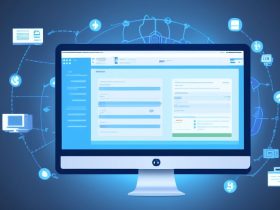In today’s fast-paced digital world, testing has become an integral part of software development. With the rise of artificial intelligence, AI-powered testing tools are revolutionizing the way developers and QA teams identify bugs, optimize performance, and ensure seamless user experiences. But what exactly makes these tools so effective, and how can they transform your development process? Let’s dive into the world of AI-powered testing tools and uncover their potential.
What Are AI-Powered Testing Tools?
AI-powered testing tools leverage artificial intelligence and machine learning algorithms to automate and streamline the testing process. These tools can analyze vast amounts of data, predict potential issues, and even adapt to changes in the software environment. Unlike traditional testing methods, AI-powered solutions are faster, more accurate, and capable of handling complex scenarios with minimal human intervention.
Key Features of AI-Powered Testing Tools
These tools come equipped with a range of features designed to enhance efficiency and accuracy. Some of the standout capabilities include:
- Automated Test Case Generation: AI algorithms can create test cases based on historical data and user behavior patterns, reducing manual effort.
- Self-Healing Tests: The tools can automatically update test scripts when there are changes in the application, ensuring continuous testing without interruptions.
- Predictive Analytics: By analyzing past data, AI can predict potential failures and suggest preventive measures.
- Visual Testing: AI-powered tools can detect visual inconsistencies in the user interface, ensuring a consistent experience across devices.
Benefits of Using AI-Powered Testing Tools
Adopting AI-powered testing tools offers numerous advantages for businesses and development teams. Here are some of the most significant benefits:
Improved Efficiency
AI-powered tools can execute tests much faster than manual methods, allowing teams to focus on more strategic tasks. This leads to shorter development cycles and quicker time-to-market.
Enhanced Accuracy
By minimizing human error, these tools ensure more reliable test results. They can also identify subtle issues that might be overlooked by manual testers.
Cost Savings
While the initial investment in AI-powered tools may be high, the long-term savings are substantial. Reduced manual effort, fewer bugs, and faster releases contribute to lower operational costs.
Scalability
AI-powered testing tools can easily scale to handle large and complex applications, making them ideal for enterprises with diverse software portfolios.
Popular AI-Powered Testing Tools in 2023
With so many options available, choosing the right AI-powered testing tool can be challenging. Here are some of the top tools that are making waves in the industry:
1. Testim
Testim uses machine learning to create, execute, and maintain automated tests. Its self-healing capabilities ensure that tests remain functional even as the application evolves. Learn more about Testim.
2. Applitools
Applitools specializes in visual testing, using AI to detect visual bugs and ensure consistency across different devices and browsers. Explore Applitools.
3. Mabl
Mabl combines test automation with machine learning to provide end-to-end testing solutions. Its intuitive interface makes it easy for teams to adopt and integrate into their workflows. Discover Mabl.
4. Functionize
Functionize offers a cloud-based testing platform that uses AI to automate functional, performance, and load testing. Its smart analytics provide actionable insights for improving software quality. Check out Functionize.
How to Choose the Right AI-Powered Testing Tool
Selecting the right tool depends on your specific needs and goals. Here are some factors to consider:
- Compatibility: Ensure the tool integrates seamlessly with your existing tech stack.
- Ease of Use: Look for tools with user-friendly interfaces and comprehensive documentation.
- Scalability: Choose a tool that can grow with your business and handle increasing testing demands.
- Support and Community: Opt for tools with robust customer support and active user communities.
Real-World Applications of AI-Powered Testing
AI-powered testing tools are being used across various industries to improve software quality and efficiency. Here are a few examples:
E-Commerce
E-commerce platforms use AI-powered tools to test their websites and apps for performance, security, and user experience. This ensures a smooth shopping experience for customers, especially during peak seasons.
Healthcare
In the healthcare sector, these tools are used to test medical software and applications, ensuring they meet strict regulatory standards and deliver accurate results.
Finance
Financial institutions rely on AI-powered testing to validate the functionality and security of their banking apps and payment systems, protecting sensitive customer data.
Challenges and Limitations of AI-Powered Testing
While AI-powered testing tools offer numerous benefits, they are not without challenges. Some of the common limitations include:
- High Initial Cost: Implementing these tools can be expensive, especially for small businesses.
- Complexity: Some tools require technical expertise to set up and use effectively.
- False Positives: AI algorithms may occasionally flag non-issues as bugs, requiring manual verification.
Future Trends in AI-Powered Testing
The future of AI-powered testing looks promising, with several emerging trends set to shape the industry:
- Increased Adoption of AIOps: AI-powered testing will become a key component of AI-driven IT operations (AIOps), enabling proactive issue resolution.
- Integration with DevOps: AI testing tools will be seamlessly integrated into DevOps pipelines, enabling continuous testing and delivery.
- Advancements in Natural Language Processing (NLP): NLP will make it easier for non-technical users to create and manage test cases.
Conclusion
AI-powered testing tools are transforming the way software is developed and tested. By automating repetitive tasks, improving accuracy, and enabling scalability, these tools empower teams to deliver high-quality software faster and more efficiently. As technology continues to evolve, the adoption of AI-powered testing will only grow, making it an essential component of modern software development. Whether you’re a small startup or a large enterprise, investing in these tools can give you a competitive edge in today’s digital landscape.
“`












Leave a Reply